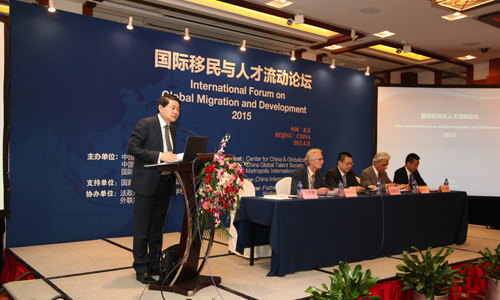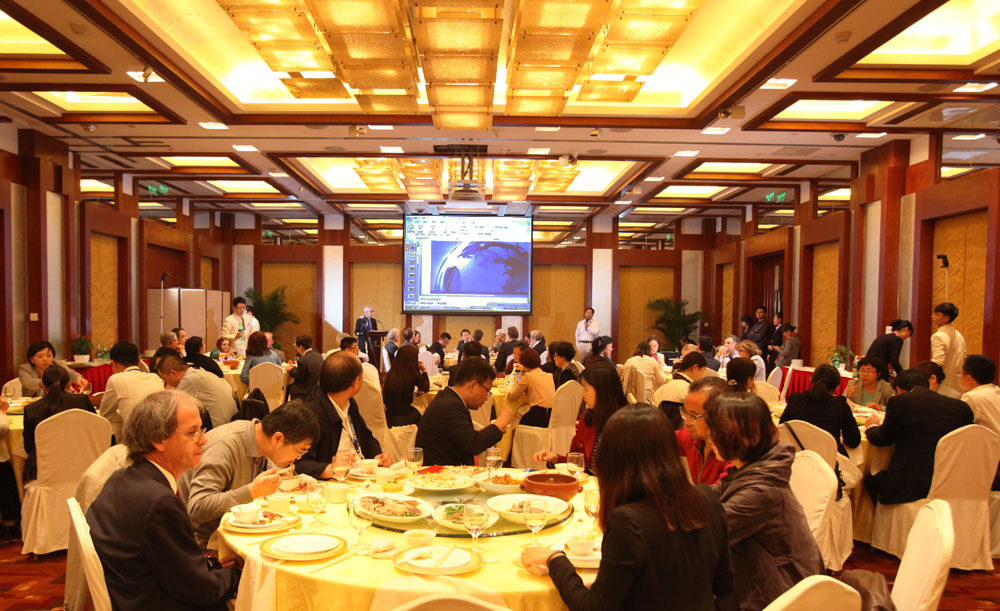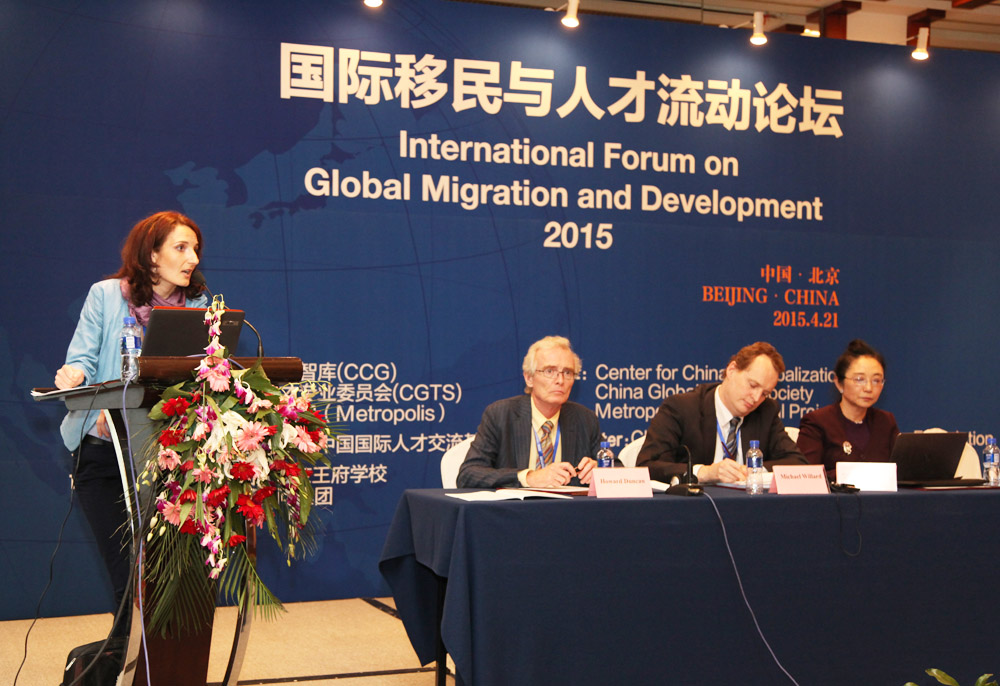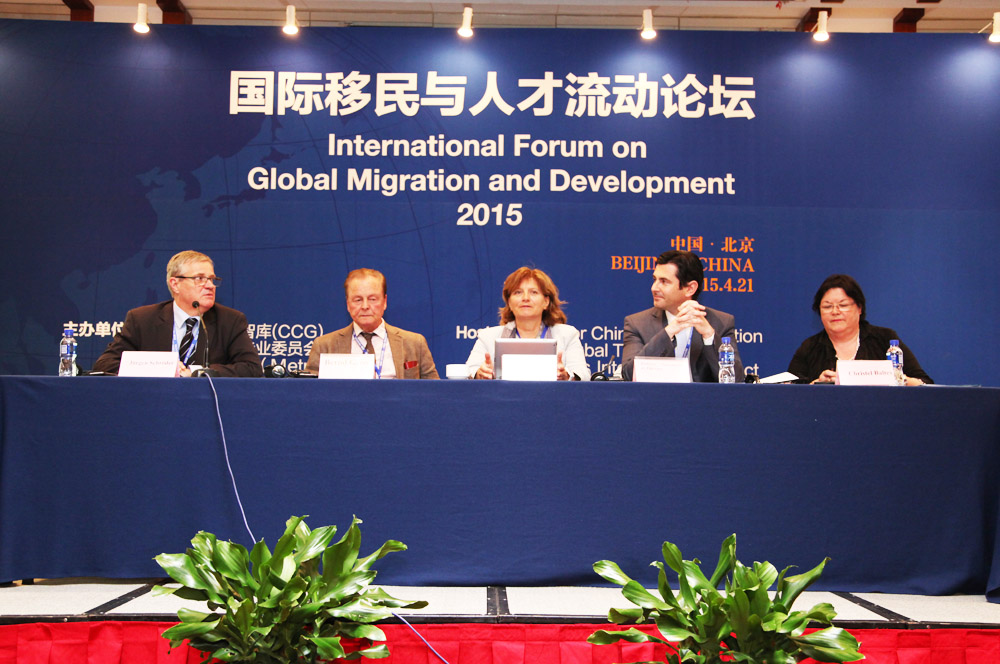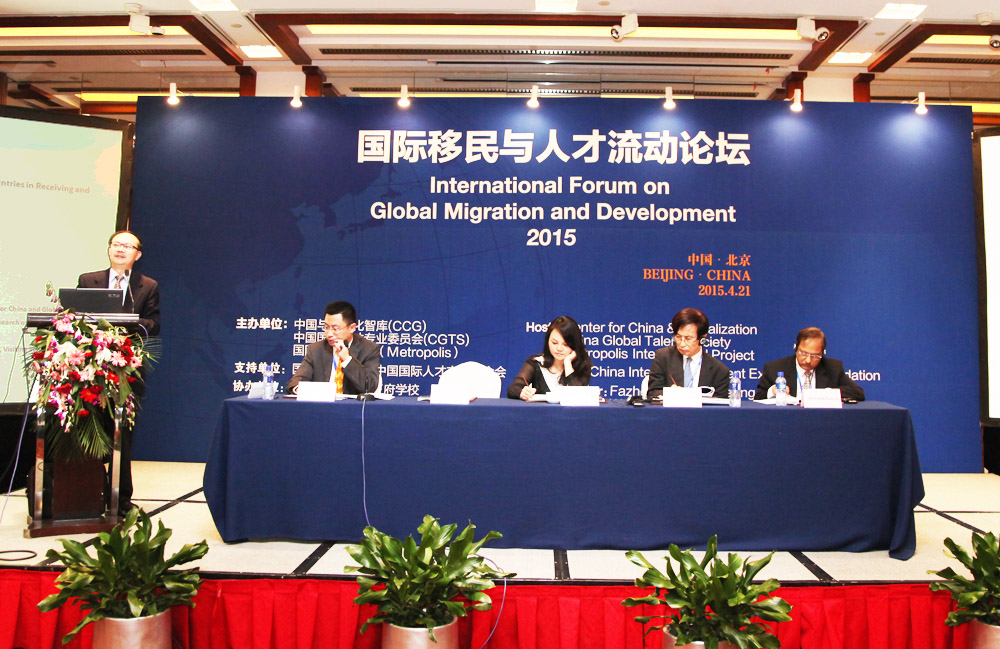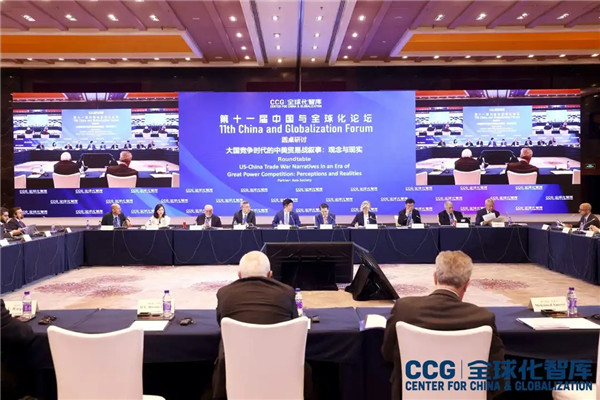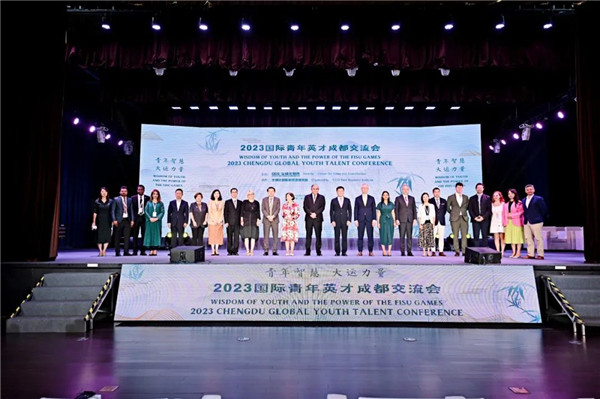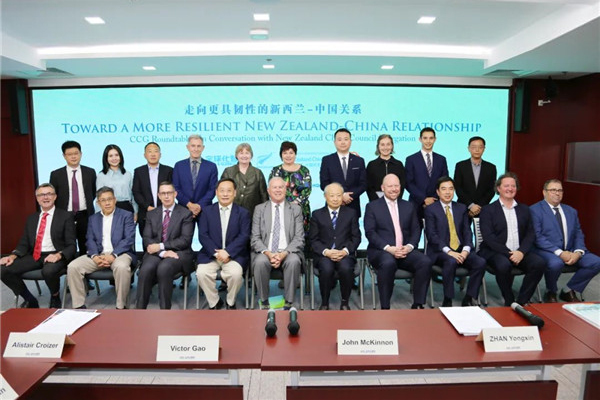CCG Hosts Multinational Discussion on Global Migration and Development
In light of the new trends in international migration and its growing impact on global development, the Center for China & Globalization held the 2015 International Forum on Global Migration and Development in Beijing on April 21.
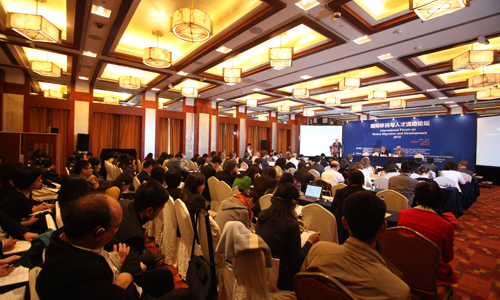
Nearly 200 people from over 15 countries, including China, USA, Canada, Japan, India, and Germany, were invited to the forum to share their knowledge and insights about migration in China and the world. Besides Chinese government officials, those attending the forum consisted of representatives from international organization and foreign embassy officials in China, various news media outlets, and over 70 global migration experts. It was the first time that China has held such a high-level international forum on global migration, underscoring its growing attention from and engagement with international society in addressing this critical issue.
Welcome and Opening Remarks
Panel 1: Changing Map: Global Migration Trend and the Responses of Migration Policy
One strong recent trend with respect to the flow of global migration is its increasingly multi-directional and circular nature. Growing numbers of migrants now prefer to go countries with emerging economies. In the past, these countries served as major sources of migration. And faced with rising pressure caused by graying demographic profiles and consequent labor shortages, developed countries are relaxing immigration rules in order to increase their pool of younger workers. These trends raise the following questions:
* What are the new inner dynamics of global migration?
* What strategies of are developed countries and developing countries devising for this new era of global migration?
* What are the new tasks for International and Inter-Governmental Organizations in the changing global migration environment?
Panel 2: Imagining a World free of Barriers to Migration: China’s Role in Global Migration Governance
China and the U.S. both agreed to extend their visa validity periods to 10 years during 2014 Asia-Pacific Economic Cooperation Meeting (APEC), and this move is expected to effectively enhance the exchange of talent between the two countries. Such simplified talent visa application procedures should be promoted by China with other developed nations, such as Canada, which have already granted working and residence visas good for 10 years to Chinese citizens, in order to remove the barriers for global talent to come to China. This issue gives rise to the following questions:
* Along with China’s rise in global economic governance and growing openness of the Chinese government toward international talent mobility, what kind of role will the People’s Republic play in the future governing of worldwide migration?
|
|
| Chair: Wang Huiyao, President, Centre for China and Globalization (CCG) Presenter: Liu Guofu, Professor of Law School of Beijing Institute of Technology Wang Huiyao, President, Centre for China and Globalization (CCG) Wang Guangfa, Chairman of the Board and President of Fazheng Group, Chairman of the Board and Principal of Beijing Royal School David Zweig, Chair Professor of the Hong Kong University of Science and Technology, Vice President of CCG |
Luncheon
|
|
| Chair: Wang Huiyao , President of Centre for China and Globalization (CCG) Speaker: David Manicom, Associate Assistant Deputy Minster, Strategic and Program Policy, Citizenship and Immigration Canada Par Liljert, Head of International Organization for Migration (IOM) Liaison Office in China |
Panel 3: Experiences and Challenges of North America and Australian Immigration Development
Even as being criticized, President Obama has been promoting the policy on immigration reform and has announced executive actions on US immigration policy. Canada is also beginning to review how it benefits from immigration by altering its investment immigration policy. Australia has always been implementing a loose immigration policy for global international students. The success of North American countries in culturally assimilating immigrants has provided a good example for other countries. But while North America and Australia will likely remain the first choice of migrants in the future, this supremacy will be challenged the growing importance of emerging economy countries. These developments give rise to the following questions:
* What are the advantages of and what does the future hold for the U.S. , Canadian, Australian immigration policy framework?
* What are the internal and external factors currently affecting the cultural integration of migrants in North America? Will it be a long trend Australia remain the immigration policy, especially the international students policy?
* How can this region remain a magnet for global talent?
|
|
| Chair: Howard Duncan, Executive Head of Metropolis Project Presenter: Michael Willard, Minister Counsellor (Immigration), Regional Director –East Asia Department of Immigration and Border Protection, Australian Embassy, Beijing Wei Li, Professor, School of Geographical Sciences and Urban Planning, Arizona State University, U.S. Mihaela Vieru, Instructor & PhD Candidate, Metropolis Secretariat, Carleton University, Canada |
Panel 4: Current Situation and Future of Integrating Migrants in Europe in a Post-Economic Global Crisis Era
European countries may face a crucial policy choice dilemma. On the one hand, developments like aging populations and attendant labour shortages call for a more open migration policy. On the other hand, as countries like France illustrate, a more ethnically diverse population serves as a breeding ground for social conflicts. Multiculturalism and racial integration have become a Gordian knot for European Society. In this context, the following questions must be asked:
* How is migration currently developing in Europe and how has it affected demographic trends on the continent?
* How will European governments address the multicultural problems based on the existing mechanisms for doing so and devise new solutions for addressing them in the future? What roles should governments and social organizations play respectively?
* What kind of new actions are Europe countries taking to change migration policy in general?
|
|
| Chair: Jurgen Schroder, Responsible, Integration through Qualification(IQ),Federal Ministry of Labor and Social Affairs, Germany Presenter: Bernd Geiss, Former Head of the Working Staff of the Federal Government Commissioner for Migration, Refugees and Integration , Germany Jurgen Schroder, Responsible, Integration through Qualification (IQ), Federal Ministry of Labor and Social Affairs, Germany Anne Guller-Frey, Door to Door – gGmbH Integration Projects Transnational Coordination MigraNet Regional Network, Germany Rodrigo Vasconcelos de Oliveira , Regional Under Secretary of the Presidency for External Relations Azores Regional Government, Portugal Christel Baltes , Professor, Gender Representative of the University of Luxembourg Coordinator of the European Migration Network – National Contact Point – Luxembourg |
Panel 5: Export or Import? Different Standpoints of Asian Countries in Receiving and Sending Migrants
Asian countries such as China and India are experiencing a role transition from functioning simply as a source of global migration to becoming both a source and recipient of these global population flows. China has been marked by the growing phenomenon of Chinese returning home after studying and working overseas. The People’s Republic is also taking in growing numbers of non-Chinese migrants. These shifts have been fueled by China’s emergence as the second largest economy in the world and will certainly be accelerated by its future development. At the same time, the attitudes of Japan and Korea toward migration are gradually changing, as they learn from the manner in which Western countries have successfully (and unsuccessfully) managed migration. In other countries, such as Philippines in Southeast Asia, remittances from emigrants remain a key source of economic support for households. We can ask the following questions regarding migration in the Asian context:
* Where are Asians emigrating to worldwide?
* How to compare the standpoints and actions of different Asian countries in different situations?
* What should be the role of Asian countries in the global governance of migration?
|
|
| Chair: Chen Liang, Deputy Dean, South China Global Talent Institute, Center for China and Globalization (CCG) Presenter: Lei Fengyun, Council Member and Researcher of China Society for Research on International Professional Personnel Exchange & Development Linda He, Chairman & President of Wailian Overseas Consulting Group, Visiting Scholar of Columbia University Yasushi Iguchi, Professor of Kwansei Gakuin University, Japan Binod Khadria, Professor of Jawaharlal Nehru University, India |
LocationBeijing

